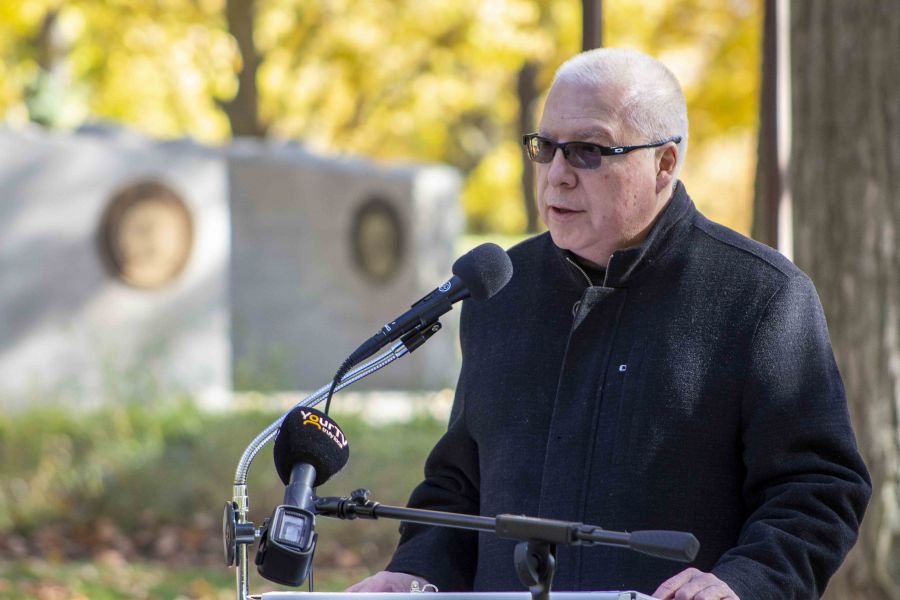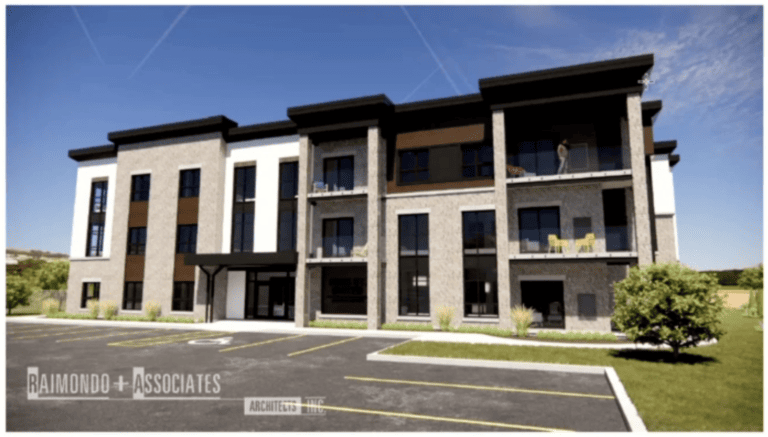Remembrance Day might not even exist, if not for Canada’s Indigenous allies who fought to help the British in the War of 1812.
During the battle of Queenston Heights, without the courage of Mohawk chief John Norton and leader Joseph Brant, the British would almost certainly have lost that key battle – and likely the war.
That was part of the focus of a Remembrance Day ceremony at the Landscape of Nations memorial at Queenston Heights on Saturday.
It was also to celebrate Indigenous soldiers who have fought and died for Canada since then and continue to do so today — something that Indigenous leaders in Niagara feel is far overdue.
Brian Kon, a First Nations elder and senator for the Niagara Region Metis Council, was among a small crowd Saturday to hear words as a ceremonial fire burned in the background.
He said the contributions of Indigenous soldiers were overlooked for too long and he is glad to see more recognition for the critical role Indigenous people played in the formation of Canada.
“The War of 1812 wouldn’t have been won if it wasn’t for the First Nations and the allies that were working with them and working with the British,” Kon said.
“Also, knowing that in the First and Second World War, the First Nations, Metis and Inuit were among the first to go forward and to volunteer — and they volunteered in large numbers. They weren’t acknowledged for their contribution for decades. In fact, the Metis veterans weren’t acknowledged officially by Canada until 2019. That was the first time they started to receive any kind of acknowledgement.”
“So, a lot of our veterans were in their late 90s, early 100s and getting their cheques and if they were gone, then it would go to family members. But again, for those (who died), they left this earth not being recognized for the contributions that they had made.”
He noted that “it’s also important, we’ve got some service people today that are active and so we also have to honour them and remember the contributions that they’re making, even today,” he said.
So, Canadians need “to honour and remember the dead, but also to support and be there for those who are currently enlisted.”
Tim Johnson, an Indigenous leader and former co-chair of the Landscape of Nations Committee, spoke about the importance of holding the ceremony at Queenston Heights every year.
“Norton, Brant and the warriors who fought here have been credited by eyewitnesses and historians of providing strategic attacks and support that held off the American advance until British reinforcements arrived,” he said.
“Several indigenous fighters would die that day, including Oneida and Onondaga warriors and two Cayuga chiefs, among a total of 105 British soldiers, militia and Indigenous forces killed in action. Some 300 Americans were killed and wounded and 958 taken prisoner.”
“So, this is consecrated ground upon which we are not only responsible, but obligated, morally and ethically, to conduct this solemn ceremony each year without ambivalence and without fail to recognize and respect the commitments and achievements made by allied Indigenous nations throughout the War of 1812. And consider what that legacy means when carried forward to the present time.”
Johnson also spoke of the advancements made in the recognition of Indigenous people in Niagara since the installation of Landscape of Nations in 2016.
Some of the positives have been in the form of legacy spaces in the region, such as public artwork and exhibitions.
“Since the unveiling of the Landscape of Nations commemorative memorial, several other legacy spaces have emerged, with even more on the way,” Johnson said.
“Parks Canada is also currently exploring the feasibility of a concept first proposed back in 2013 by Red Hill to establish a symbolic spaceframe structure and the historic and hugely important Indian Council House in the Commons, and among other advancements, the Niagara-on-the-Lake Museum has launched a capital expansion plan for its facilities with an exhibit and programmatic embrace of equity, diversity and inclusion principles and policies,” he said.
“So, today, five years hence, we view a Niagara region that has grown considerably, and its knowledge and understanding of Indigenous Peoples, our histories, cultures and experiences.”
Lord Mayor Betty Disero was on hand and helped lay a memorial wreath.
“For years, and for centuries, the Indigenous people were not recognized for their major contributions to our lives and the lives we live today. And so this remembrance that they’ve started will help to make the public aware of those contributions,” Disero said.
“We are so grateful to be able to be here on this land that is theirs, or that was theirs, and able to enjoy the natural beauty around us — and because of their contributions to the protection of it.”











